How Long Should Paint Dry Before Applying Polyurethane?
Just painted your floors and need to coat them with polyurethane? Learn how long to wait!
If you have just painted your wooden floors, you will most likely want to apply a coat of polyurethane finish on the newly painted wooden surfaces. And there can be many reasons to do that.
For example, some homeowners want their wooden surfaces and floors to look sparkling, renewed, and lovely.
At the same time, others want to cover the wooden surfaces in their homes with polyurethane in order to protect the freshly applied paint and make it last longer.
No matter the reason, there is always one common issue. If you have recently painted your floors and now you want to apply polyurethane, the question you should be asking yourself is, how long for paint to dry before polyurethane?
In this article, we will tell you how much time you should wait before applying polyurethane over paint and explain step by step how exactly this substance should be applied.
In addition, you will learn a lot of other useful information on this subject that will surely help you keep your wooden surfaces shiny and smooth longer.
How Long For Paint To Dry Before Applying Polyurethane?
So, you have painted your wooden floors and now you are wondering how much time you need to wait before you can start applying polyurethane.
The general rule of thumb is that you should allow the paint at least 24 to 72 hours to dry.
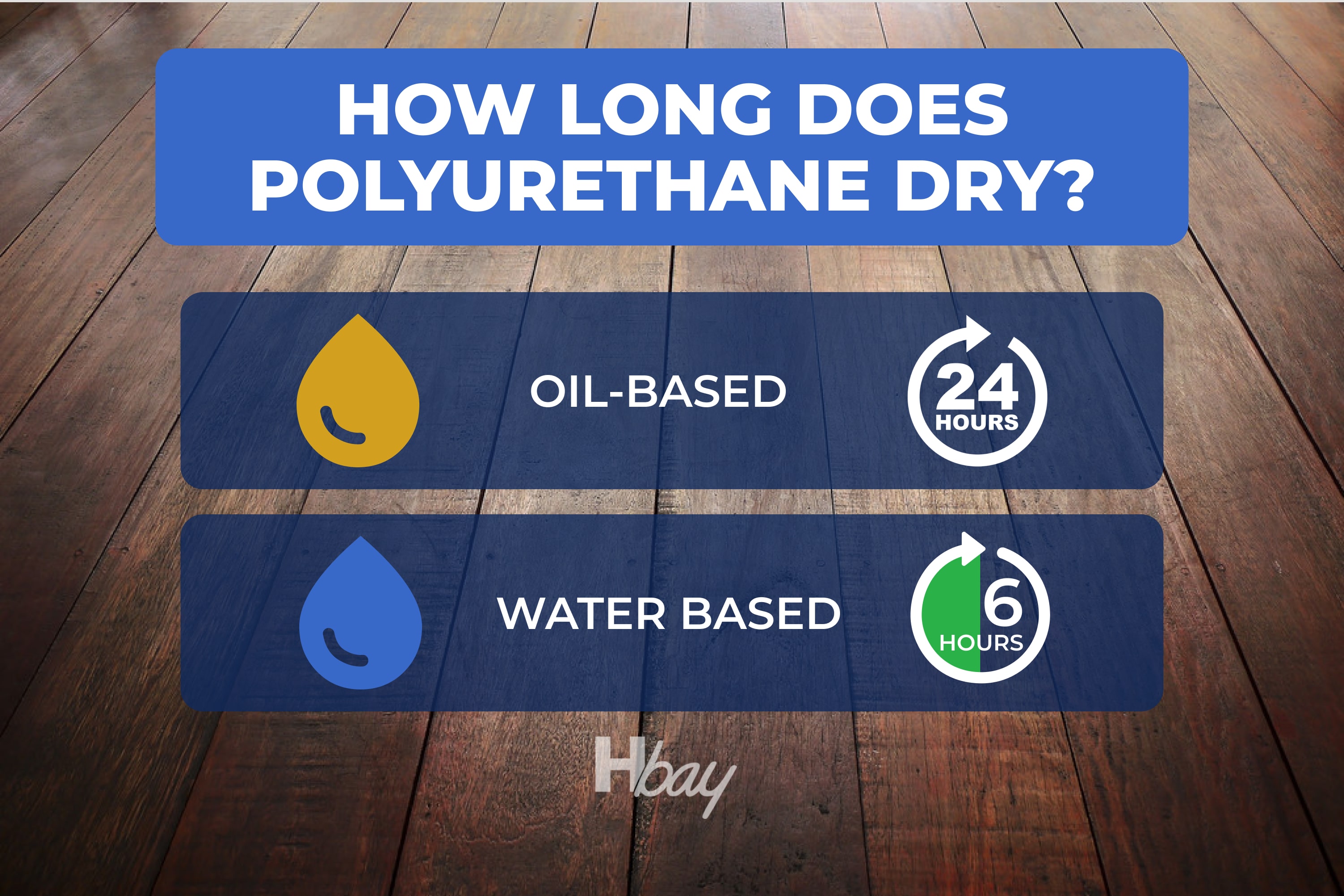
housekeepingbay.com
Of course, note that the drying time will depend on the type of paint you are using. If you are not sure if the paint has fully cured, wait an extra day or two to be safe.
You can apply both oil-based and water-based polyurethane over the paint.

housekeepingbay.com
The polyurethane will protect the surface of the paint while making it look more appealing and durable. And if you have properly prepared the surface of the acrylic paint, the polyurethane won’t ruin it.

kvkirillov via VistaCreate
Table of Contents
How to Apply Polyurethane Over Paint?
Before you start working with this substance, you need to decide whether you want to use an oil-based or water-based polyurethane. We recommend you opt for water-based polyurethane since it allows you to avoid amber coloring.
If your goal is to protect the paint layer and make the painted surface look nice and add more beauty to it, you should consider applying two or more coats of polyurethane over the surface. This will also boost surface resistance and strength.
Also, here is another important notification for those who are not much aware of polyurethane use nuances.

You can apply polyurethane to any paint. All you have to do is allow the coat of paint to dry correctly if it has been recently painted, clean the surface, and prepare it for the further stages of application.
Below, we have prepared a complete explanation for you on this subject. Read on to find out more about the steps required in applying a polyurethane finish over paint.
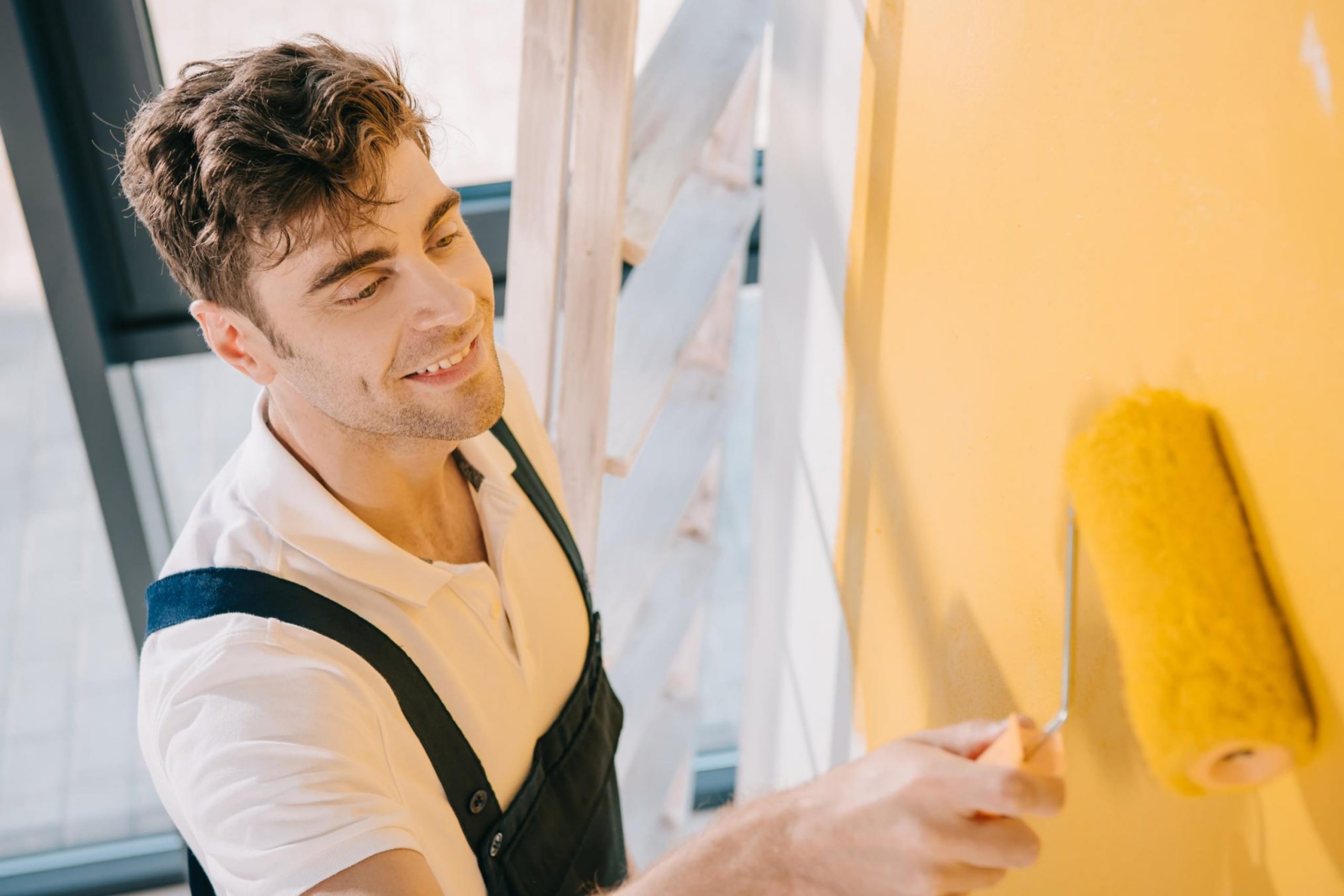
IgorVetushko via VistaCreate
Wash the Surface
If the wooden surface has been painted long ago, the very first step you should begin with is washing it properly. Washing the surface will take away the grease, stains, dirt, and all types of filth.
Like that, you will make it more perceptible for the polyurethane which means that it will be applied easier and dry better and faster.
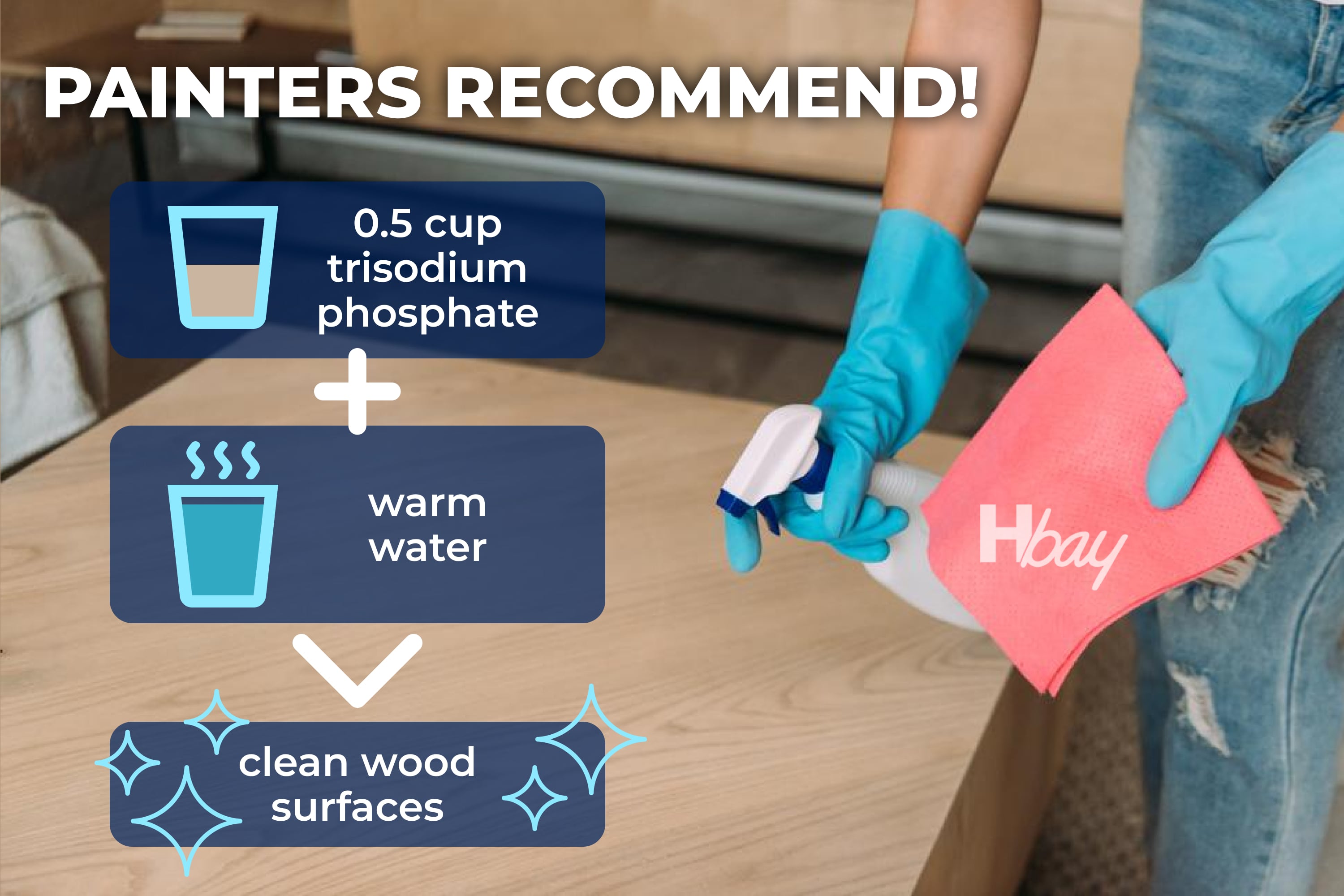
housekeepingbay.com
For washing, use a soft sponge and a strong detergent to clean the area. As an alternative option, you can mix one-half cup of trisodium phosphate in warm water to clean the wooden surface.
Trisodium phosphate is known for its cleansing powers, this is why most painters use it in order to get painted surfaces clean.
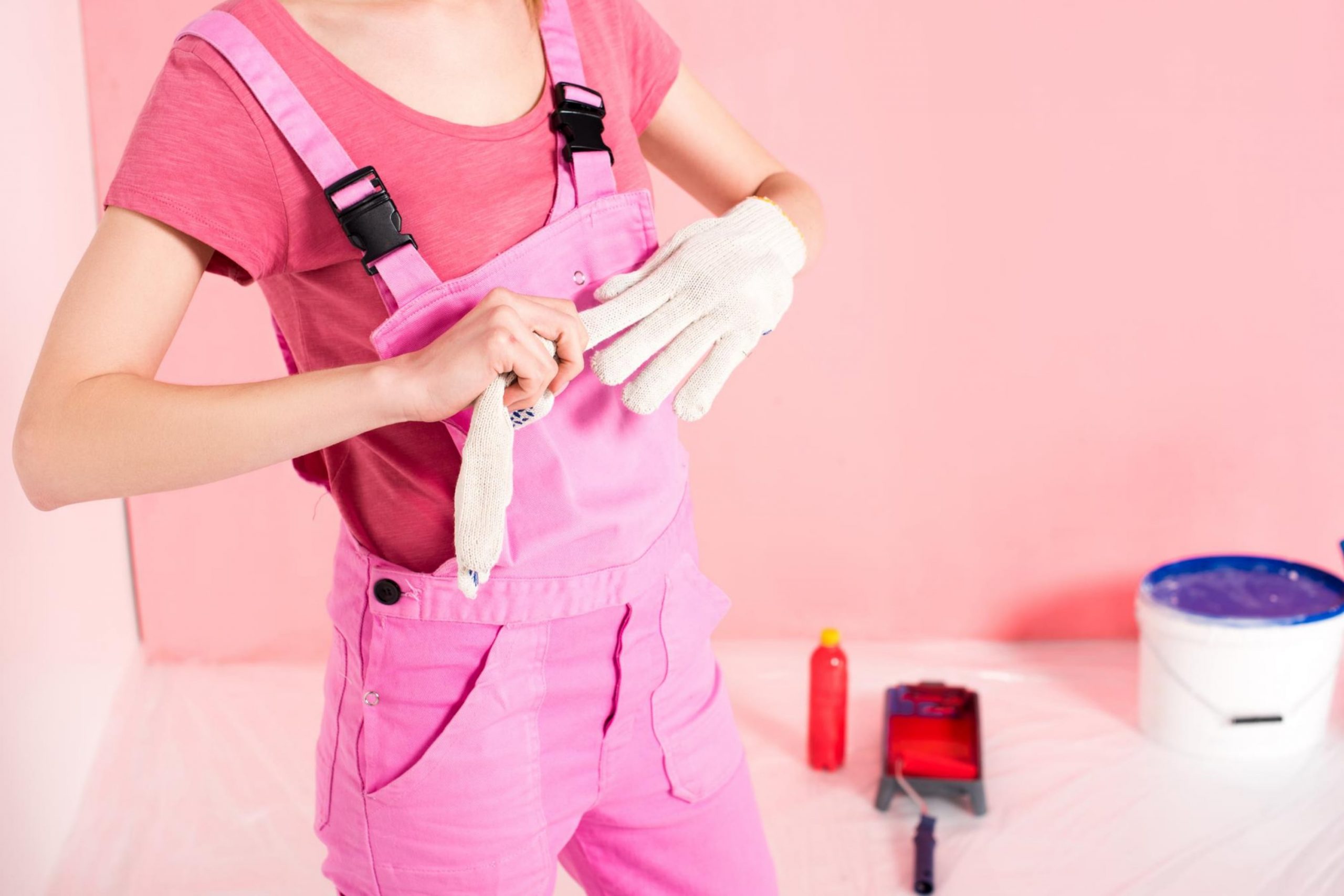
IgorVetushko via VistaCreate
Get the Scuffs Off
After washing, allow the painted surface to dry thoroughly. This usually takes between 24 and 72 hours. After drying, make sure that the surface is completely dry and, using 120-grit sandpaper, scuff it off.
Doing the scuffing will prevent any deep scratches from forming and also it will help you flatten the surface.
If you don’t sandpaper the surface, you might notice some uneven areas on it, as well as deep scratches under it after applying the polyurethane. You can choose to flatten the surface by hand or with the help of a palm sander.
Oh, one more thing! When you are done, remember to wipe clean the dust with a damp cloth.

IgorVetushko via VistaCreate
Choose Your Applicator
We have already mentioned above that you have to choose the polyurethane type that will be used. However, there is one more thing you should take into consideration in advance. You also need to choose your method of application.
When working with polyurethane, you should avoid using a roller to apply the substance because it will leave bubbles behind.
For the best application, you should either use a brush or spray it. Why do we offer two options?
See, brushing works best when you are working on a flat surface that requires forming a strong or thick film. As for the spraying option, it works best for hard-to-reach surfaces and spots.
However, note that spraying will not provide you with the film as strong or thick as that produced when you brush the surface!
There is another alternative way of applying polyurethane. You can do it in a simpler manner by just wiping.
This method is best for contoured surfaces like crown molding. This method forms a thinner coat though. Because of this, make sure that the surface you want to use this method on is not wear-prone.
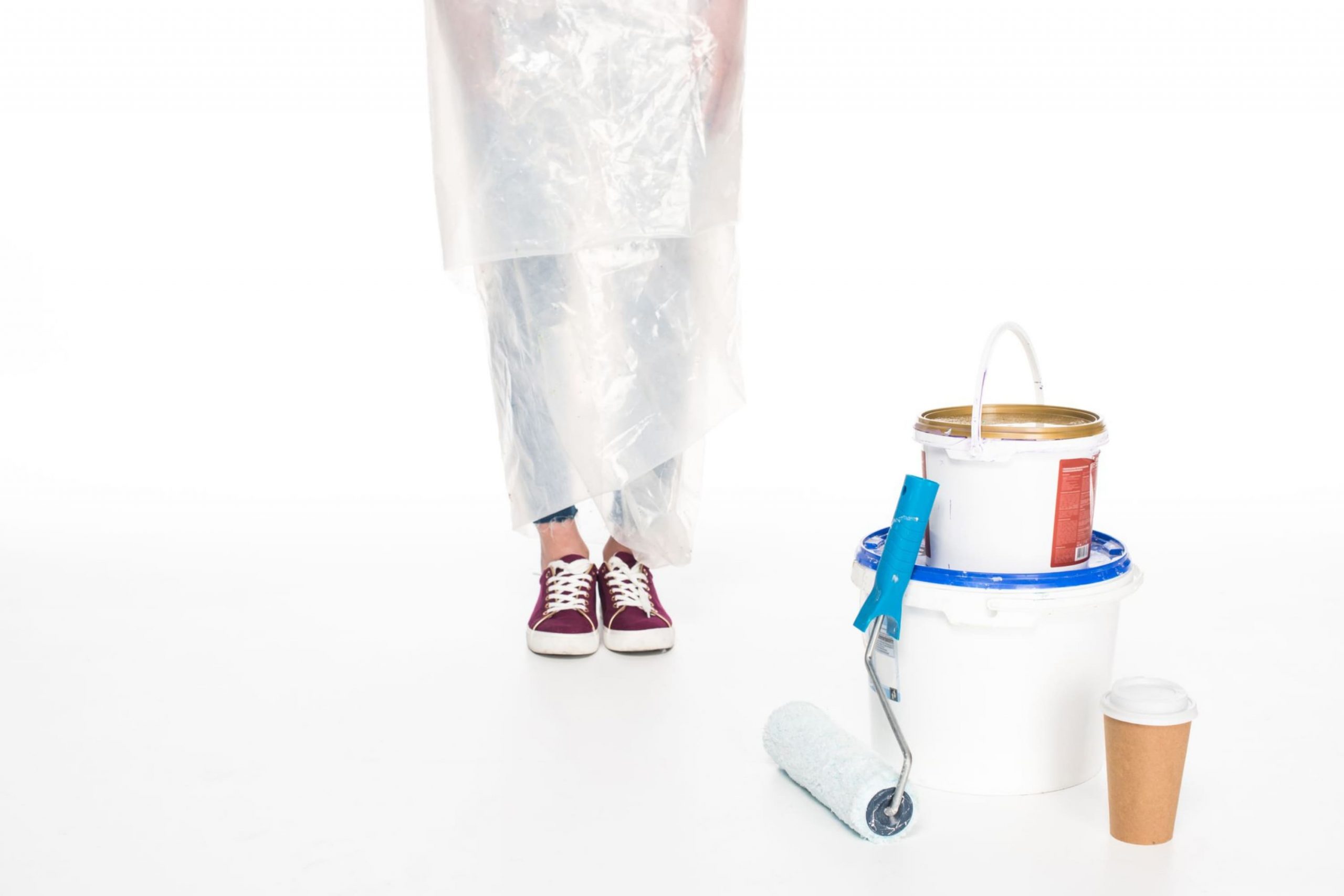
IgorVetushko via VistaCreate
Apply the First Coat
Once you have prepared your wooden surface by washing and wiping it, and when you are absolutely sure that it is dry, it is the right time to move on. Now you can apply the first coat of polyurethane.
After applying the first coat, make sure you allow it to dry for a while. Once it is completely dry, begin to scuff off the surface with sandpaper.
It will help you remove any dust particles and achieve a flattened and smoother surface.
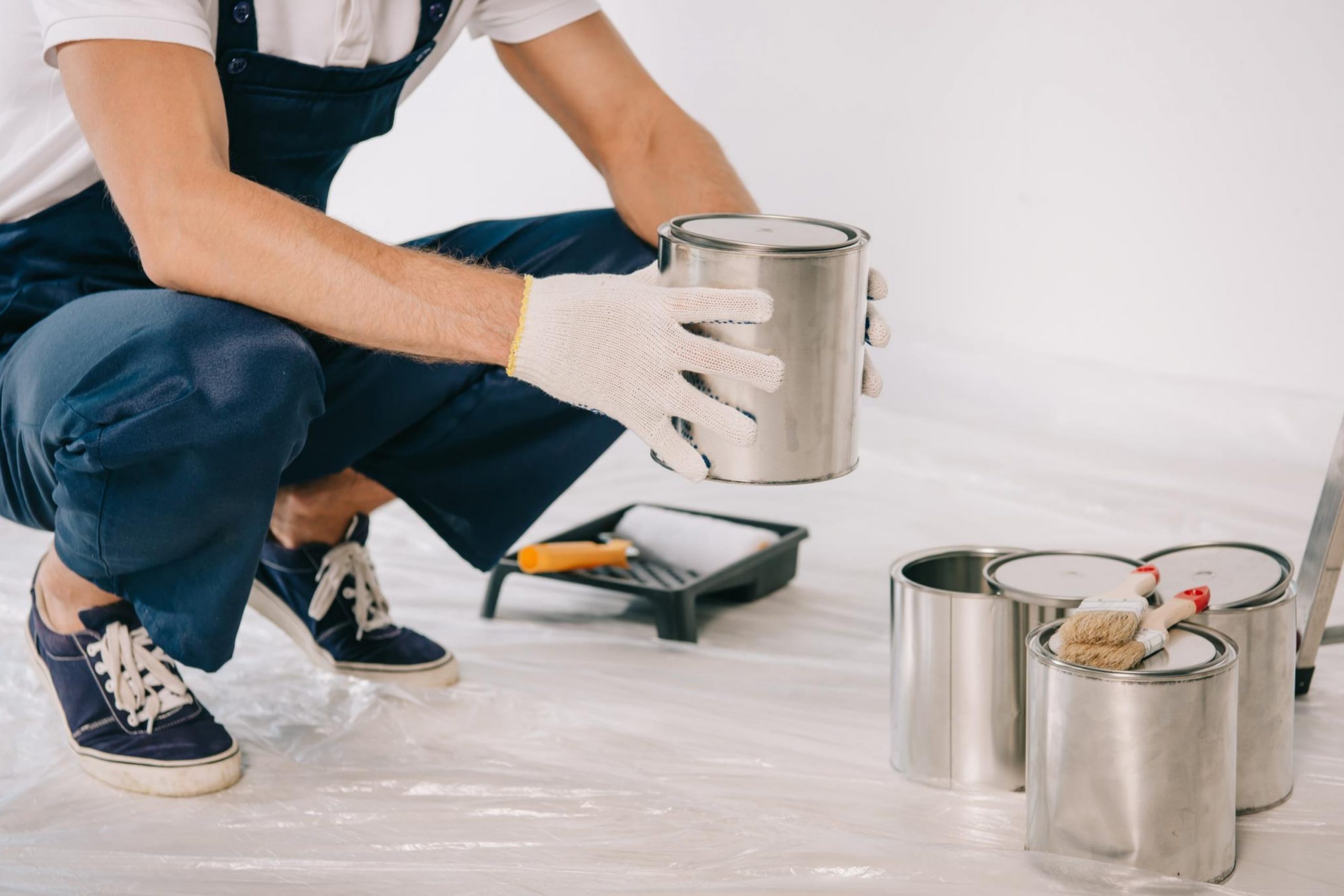
IgorVetushko via VistaCreate
Apply Second Coat
Once the surface is dry and you have scuffed it thoroughly, you can proceed with applying the second coat.
Most times, you will not need to apply more than two coats of polyurethane since this amount of the product is enough for creating a durable film. After applying the second coat, allow it to dry for at least 24 hours.
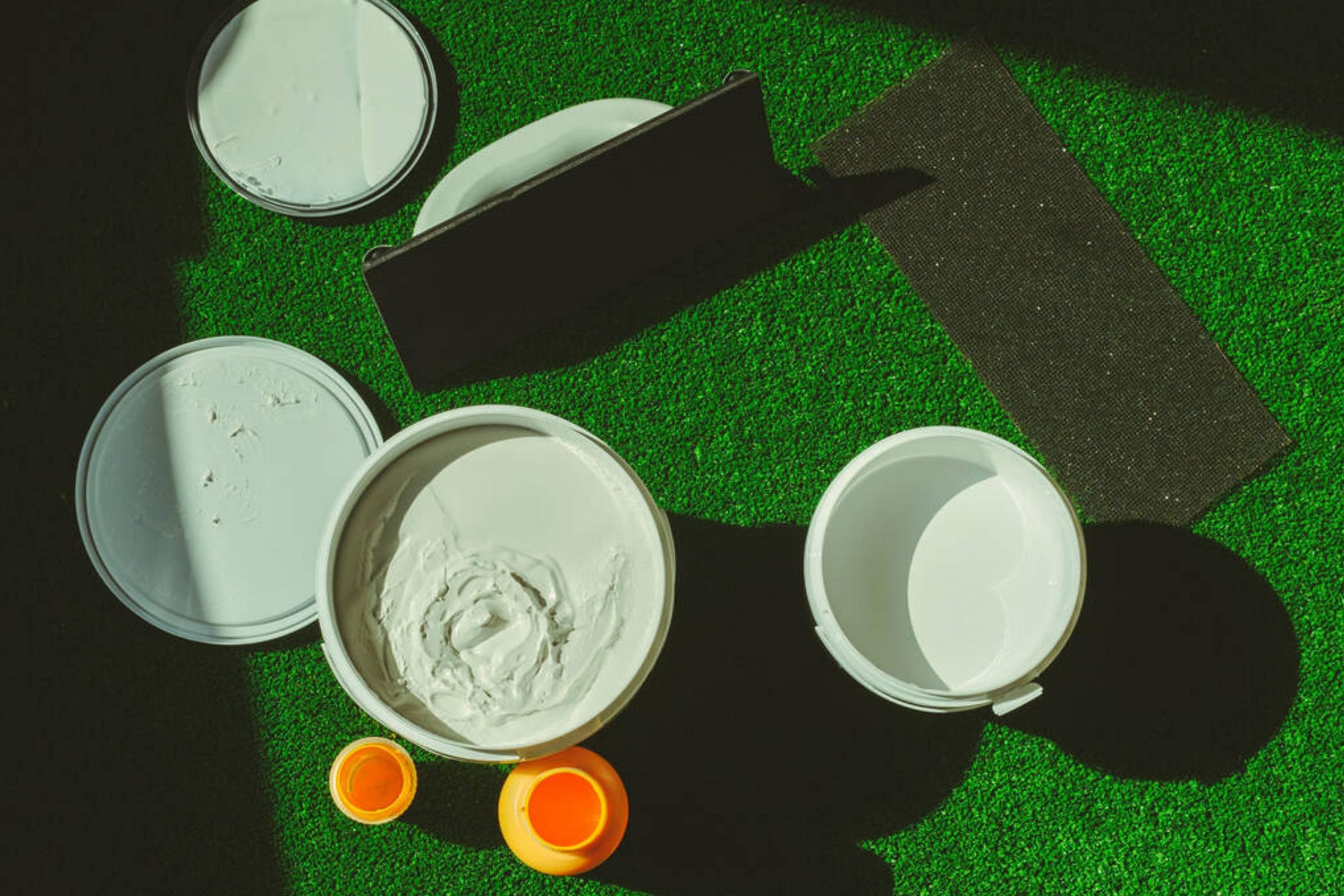
via VistaCreate
Safety Tips When Using Polyurethane
As you surely know, polyurethane is a chemical substance, which is why you need to follow certain safety rules in order to protect yourself from it. Of course, it doesn’t mean that polyurethane is deadly!
However, if it accidentally gets in direct contact with your skin or eyes, it will have quite a bad effect.
Because of that, just make sure that you follow a couple of very simple precautionary measures before you begin:
- Make sure you wear safe work clothes and gloves when using a polyurethane
- Oil-based polyurethane releases toxic fumes when applying it. Therefore, you should keep your doors and windows open.
Nothing complicated, as you can see, but these tips will help you stay safe while using this chemical.

nejron via VistaCreate
How to Make Polyurethane Dry Faster?
Nobody likes waiting, especially when it refers to any painting projects.
After we apply paint or another finish, we want it to dry as soon as possible. Luckily, it is possible to speed up the drying process for polyurethane a bit!

housekeepingbay.com
To make your polyurethane floor (or any other surface) dry faster, simply do the following:
- Use water-based polyurethane
- Maintain a working temperature between 26 degrees Celsius and 35 degrees Celsius
- Maintain proper airflow. Ventilation is crucial when applying polyurethane
Like that, the coat of polyurethane will get dry faster without any damage to the surface or to the quality/durability/lifespan of the product.
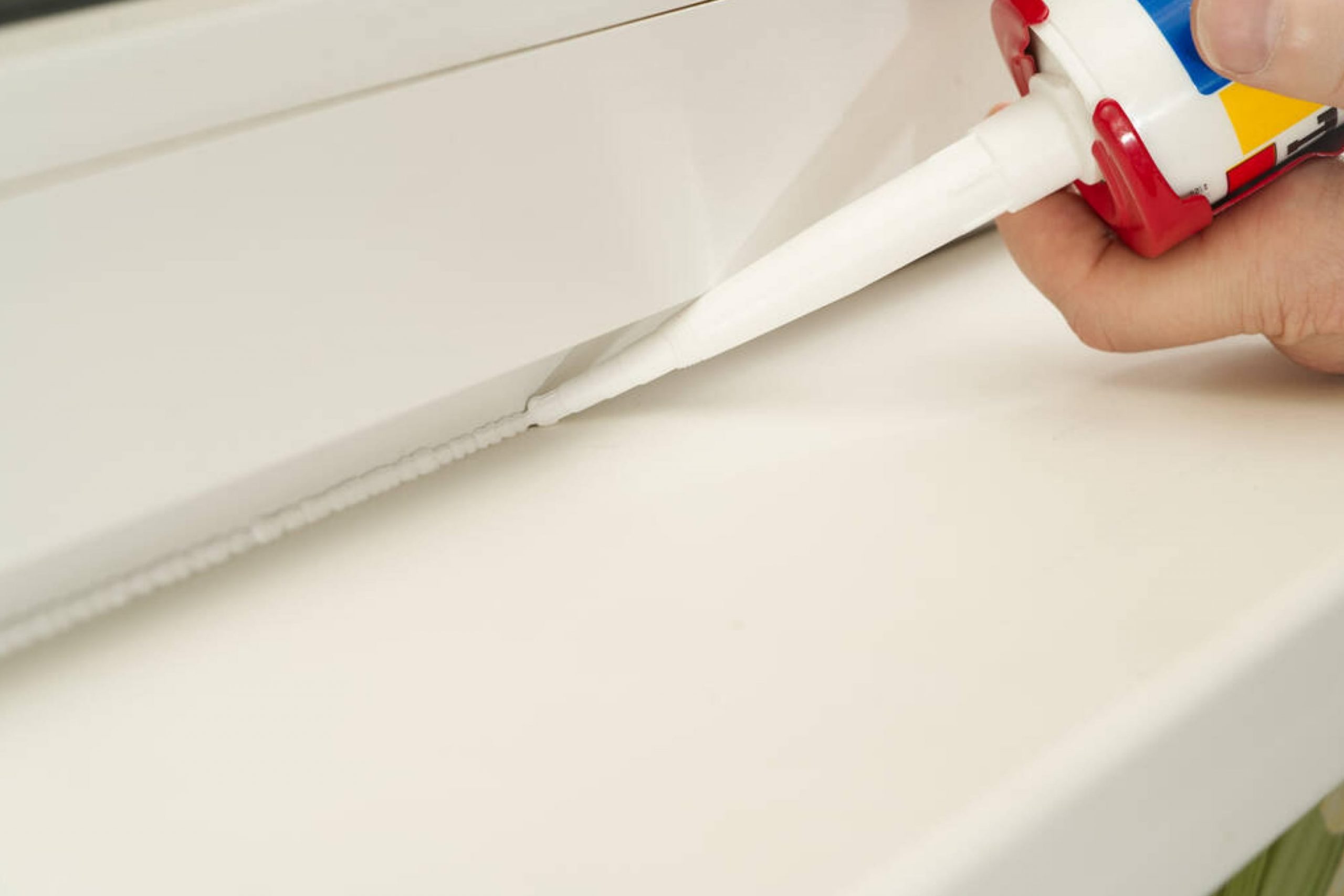
Ammatar via VistaCreate
What Is Polyurethane?
Since now you know how to apply polyurethane and how much time it is recommended to wait after you apply paint and before you proceed with applying polyurethane, you should also learn more about this chemical.
This is needed for you to be able to better understand certain specifics of its use and the nuances of this substance.
Polyurethane is a polymeric resin. It is a type of hard, robust varnish that is applied on another surface to bond tightly with it. As the polyurethane dries, the surface becomes tightly bonded, resulting in a finish that is highly resistant to wear, abrasions, and any external impacts.

There are two types of polyurethane as we have mentioned. One is oil-based and another one is water-based polyurethane. Below, you can see what makes them distinct.
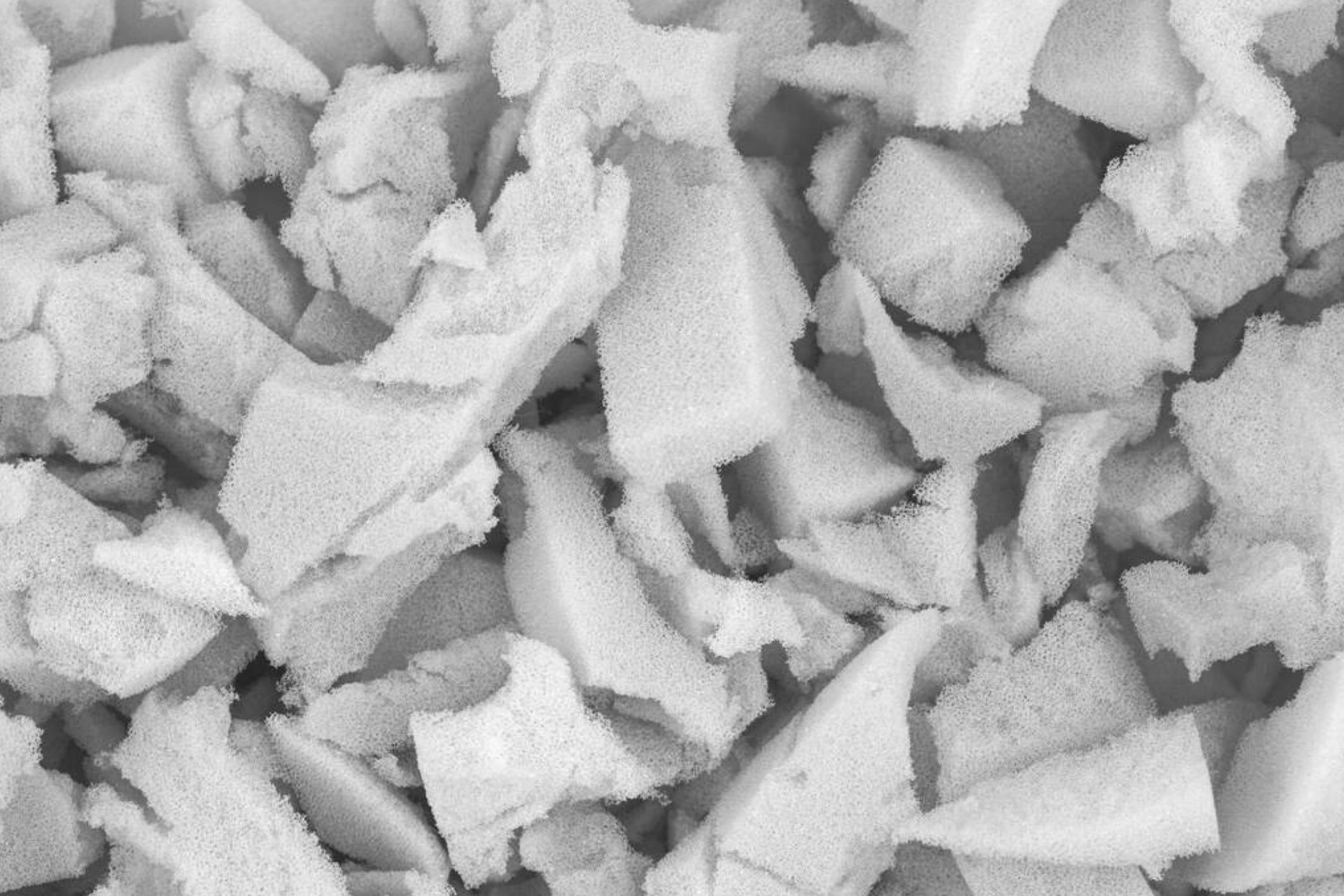
ilya1993 via VistaCreate
Oil-Based Polyurethane
Oil-based formulas of polyurethane tend to turn into an amber or yellow finish once you apply them. They form a hard, thick covering in a few coats, but you need to take into consideration that they dry slowly!
You will have to wait in between each coat to dry before applying another.
Speaking of the drying time, oil-based polyurethane usually takes about 24 hours to dry. After that, you can walk on it freely. However, they are not cured utterly, which is why you will have to walk on the surface covered with polyurethane barefooted for a certain period of time.
Also, before you start applying the polyurethane on your floors, make sure you keep your pets and furniture away, as they can meddle with the polyurethane drying time.
Water-Based Polyurethane
Water-based polyurethane dries more quickly in comparison to its oil-based alternative. However, it is also more watery.
This means that you will have to apply more coats, probably up to three, unlike an oil-based formula that needs fewer coatings.
Water-based polyurethane typically dries after six hours of the application already. At this point, the floor must become dry enough for you to walk on it freely.
Again, it is not completely cured at this point, so you will have to still walk on it with your bare feet and do some light-duty activities after 48 – 72 hours only!
It would be also best if you try to keep your pets off the floors to avoid leaving indents and other unwanted marks. Water-based polyurethane takes around 30 days to cure fully. By that time, you can start your regular activities.
But even despite quite a long curing time, this type of polyurethane is often more preferred by the homeowners because of its fast drying time.
Well, now you are fully informed about the waiting time for the coat of polyurethane applied to the wooden floor or other surfaces. Also, we told you about the types of this substance and what exactly makes them different.
With all the information received, you will be able to use polyurethane correctly which will later result in smooth, glossy, and nice-looking floors that will serve you much longer!

AndrewLozovyi via VistaCreate
Ever wished paint sampling was as easy as sticking a sticker? Guess what? Now it is! Discover Samplize's unique Peel & Stick samples. Get started now and say goodbye to the old messy way!
Get paint samples




Frequently Asked Questions
⭐Can polyurethane be used over paint?
Yes, you can apply it over paint. Just wait until the paint is fully dry.
⭐Does paint need to cure before polyurethane?
Yes. The coat of paint must be fully cured before you apply a layer of polyurethane. Otherwise, the polyurethane won’t attach properly.
⭐Is polyurethane toxic?
It’s not dangerous or deadly of course, but it does produce harmful fumes. This is why always air the room where it’s being applied.
16 thoughts on “How Long Should Paint Dry Before Applying Polyurethane?”
Leave a Reply

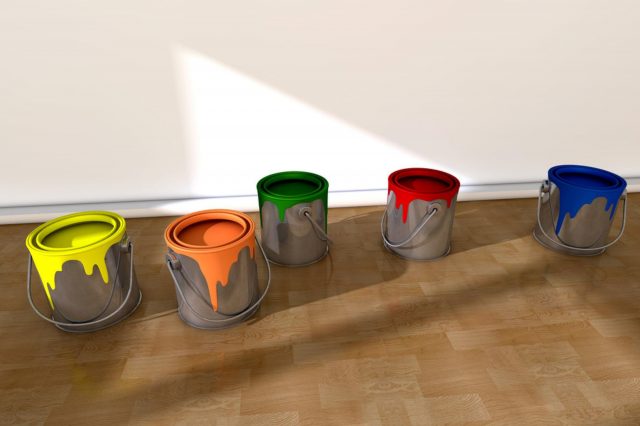
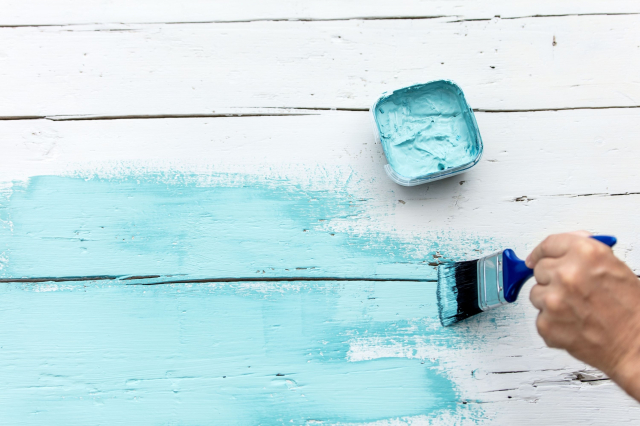
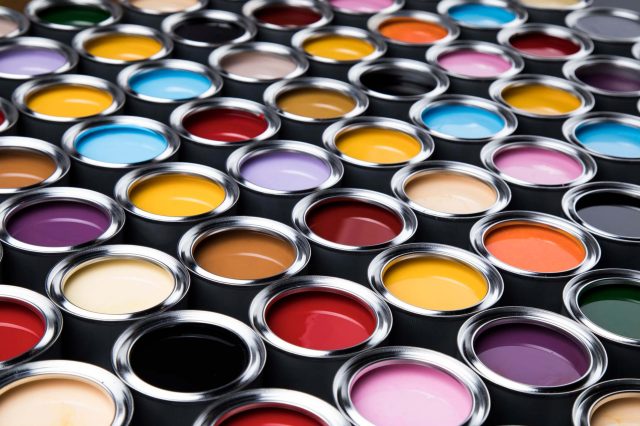
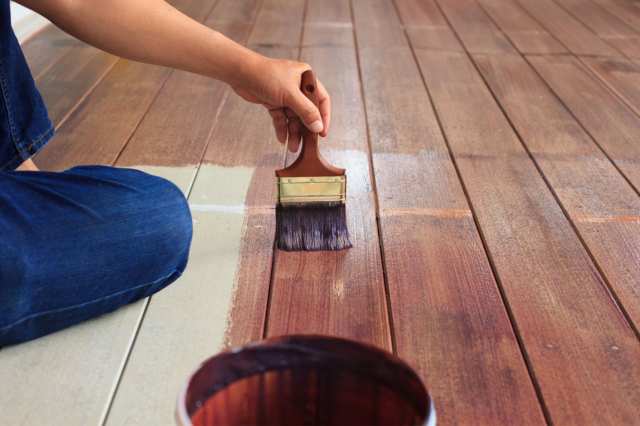



We have wooden floors in our house and they are painted. Recently I’ve noticed that the floor develops small cracks on the paint here and there, so I decided to cover them with poly. But will polyurethane work well over already painted floors?
Hello. I guess you can do that. See, in fact, both water-based and oil-based polyurethane can be applied over any type of paint successfully. It’s just important to ensure that the paint is fully cured and clean. So I’d say you should thoroughly wash and clean your floor, let it fully dry, and then cover with poly.
I heard that enamel paint is tricky to use. And since I’ve never used it before but I’d love to try, I have a question: can you put polyurethane over enamel paint to create an extra protective coating?
As far as I know, you can put polyurethane over enamel paint. And I’m pretty sure it doesn’t matter whether the polyurethane is water-based or oil-based. In both cases, it will make proper surface protection for enamel paint. But you must allow the paint to cure fully before you start applying the polyurethane!
I have spray-painted my garden furniture and now I’d like to cover it with polyurethane to add extra protection. But here’s the question: can you polyurethane over spray paint?
As long as you give your spray paint enough time to cure, you can put polyurethane over it definitely. You just need to be sure how much time your particular paint needs for curing: a good spray paint for wood needs at least 24 hours to dry, for example. So I’d not recommend you rush the application of polyurethane until you’re sure about the paint curing time!
Hi! I’m here for your help folks. If there are experienced painters here, that would be just awesome! So here is the thing: can you guys put oil-based polyurethane over acrylic paint? If I do so, will I not screw up all the paint job?
Hi! Well, I’m not that super experienced in painting, but I do remember that both oil-based and water-based polyurethane can be applied over the paint. In this case, the polyurethane will protect the paint and make it look more appealing. Also, it will make the paint layer more durable. So as long as you have properly prepared the surface of the acrylic paint, the polyurethane won’t ruin it.
How long should latex paint dry before applying polyurethane? Is drying time going to be the same as for any other type of paint (e.g. oil)?
I don’t think the paint drying time is actually the same. See, acrylics dry faster than oil paints, for example. Plus, you need to consider humidity and air temperature in a room where you’re painting. Even if the paint is quick-drying by itself, it may need more time if it’s being used in a cold or humid area.
As for your question, I’d say give the paint at least 24 to 72 hours to dry before you apply polyurethane. Of course, you need to take the type of paint you are using into consideration as they have different drying times. Anyway, if you are not sure whether the paint has fully cured, wait an extra day or two.
Hey everyone! Look guys, I’m going to use polycrylic for the first time. Does anyone know how long should paint dry before applying polycrylic?
Hello! Well, I’m not a pro at using polycrylic either, but as fara s I know, the drying time of the paint you’re using depends on the humidity levels and temperature in a room. Typically, most paint dries in about 2 hours. I’d say, allow more time if you are painting on humid days.
Hi there! I’m going to polyurethane my painted floor but here’s the issue: can polyurethane be used over the latex paint? Does anyone know?
Hello! Well, polyurethane can actually be applied on any type of paint as far as I remember. I guess you just need to decide which kindof it – water-based or oil-based – you want to use since they leave different finish and the drying times are different.
Do I have to polyurethane after painting? I mean, is it mandatory? I didn’t find this information so perhaps someone here could help me. Thanks!
Hi! As far as I know, for most painted furniture, a polyurethane coat is not necessary. Just make sure you apply multiple coats of paint, and sand lightly in between coats. Also do regular touch-ups, and your painted surface should serve you well.